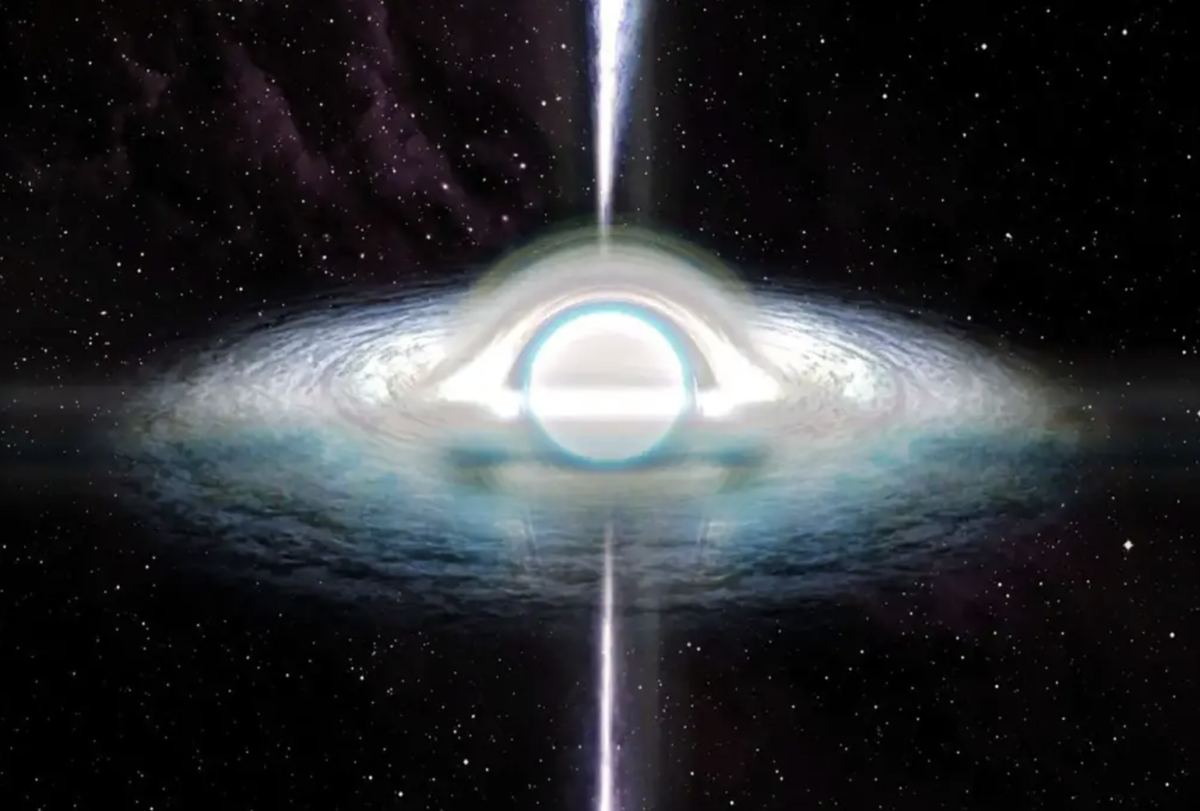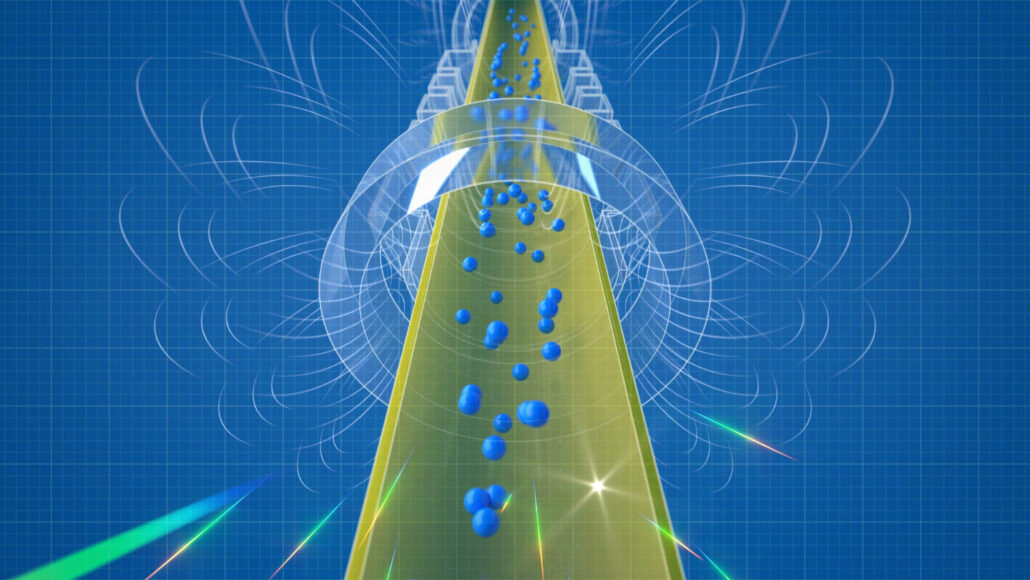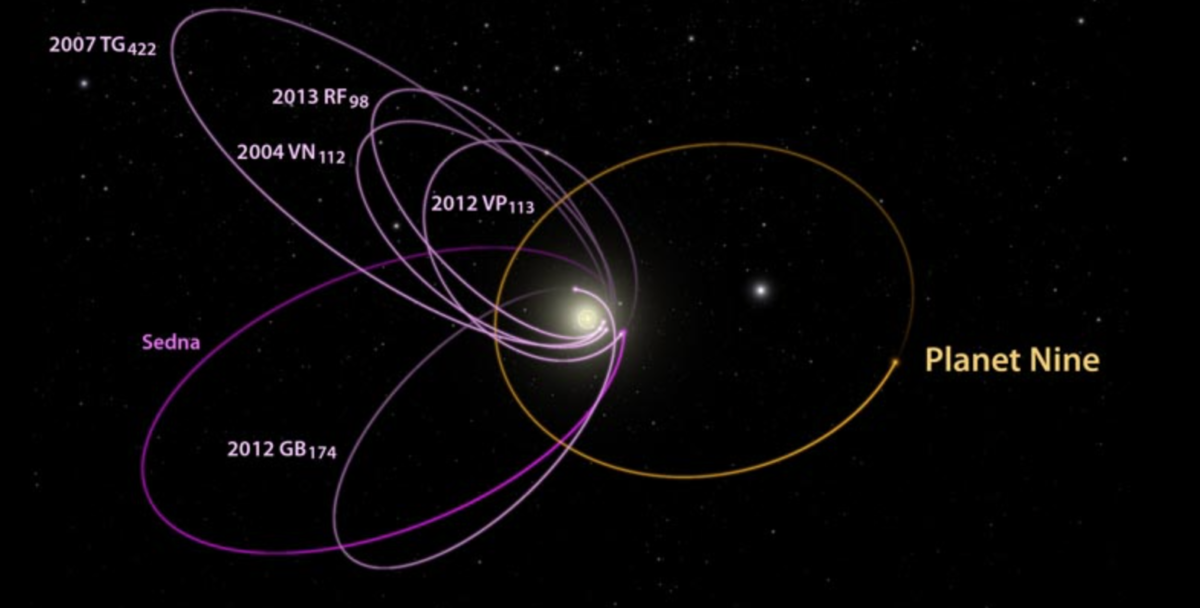We’ve all heard of black holes. They’re huge, all-consuming vacuums thousands of lightyears away, looming just far enough out of our minds for us to feel at peace, but still looming nonetheless. But, for every negative, there must be a positive. Do white holes exist? If so, where are they, and what do they do? Scientists argue that they are out there, and there is mathematics to ratify that. There are already thorough theories detailing the existence of white holes, but will there ever be a way to prove them?
To begin, black holes must first be examined. Black holes form when massive stars cave in on themselves, and the weight of the gravitational collapse condenses into a singularity, thus creating a black hole. At its root, a black hole is a singularity, meaning that it is an infinitely small clump of material. This singularity is surrounded by an event horizon, a boundary beyond which nothing can return. While the singularity’s composition is not precisely known, it is often described in the context of Einstein’s general theory of relativity, where matter and energy are compressed to an extreme degree, resulting in a gravitational force so intense that it warps the fabric of spacetime itself. However, the intricacies of what exists within a black hole’s event horizon continue to be a subject of intense theoretical exploration and scientific inquiry.
A white hole is precisely the exact reverse of a black hole. If there were a time-lapse video of an enormous star imploding, turning into a black hole, and then swallowing anything that comes near it, a white hole would be that video, but backward. While black holes exhibit gravitational pull so strong that not even light can escape, white holes are theorized to emit matter, energy, and even light with immense force. According to some interpretations of general relativity, a white hole’s core could be an opposite counterpart to the singularity found within black holes — a source of repulsive gravity that expels material outward. In the words of Neil DeGrasse Tyson, “If a particle can fall into a black hole, it can come out of a white hole.”
White holes are even stranger than black holes in the sense that they demand the impossible to go close to them. While the theory of white holes suggests that they could emit matter and energy with immense force, their hypothetical properties include an intriguing twist: it’s posited that one would need to travel faster than the speed of light to reach them. This is due to the behavior of spacetime around a white hole, where the curvature of spacetime is such that its event horizon appears as a “future boundary.” In essence, the region inside the event horizon would be disconnected from the outside, creating a scenario where crossing into the white hole’s domain would necessitate surpassing the cosmic speed limit of light. The concept of needing superluminal speeds adds an additional layer of complexity to the already enigmatic nature of white holes, raising questions about the fundamental limits of our universe and the boundaries of possibility.
The speculative concept of white holes faces significant challenges when considered within the context of entropy, a fundamental principle of thermodynamics. Entropy is a measure of the disorder or randomness within a system, and according to the second law of thermodynamics, entropy tends to increase over time. When contemplating white holes, the theoretical scenario of matter and energy explosively emerging from a singularity challenges this law, as it seems to defy the natural tendency toward greater disorder. The idea of white holes emitting particles in a seemingly non-random and organized manner contradicts the intuitive trajectory of entropy increase. This paradox raises doubts about the plausibility of white holes as objects that could exist in our universe, and it is one of the intriguing reasons why the concept of white holes faces significant skepticism within the scientific community.
In summary, white holes, though conjectural and currently lacking observational evidence, continue to captivate physicists and cosmologists alike. The study of these enigmatic objects offers a fascinating glimpse into the complexities of spacetime, gravity, and the fundamental laws that govern our universe. While the challenges posed by entropy and the theoretical requirement to exceed the speed of light remain significant hurdles, they also inspire researchers to refine their understanding of physics at extreme scales. The future of white-hole research holds the promise of not only deepening our comprehension of the cosmos but also pushing the boundaries of our knowledge, leading to new insights that may reshape our understanding of space, time, and the very fabric of reality.











































